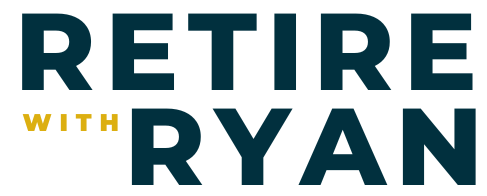7 Steps to Eliminating Your Credit Card Debt, #135
The most important rule for using credit cards is to pay them off regularly and avoid carrying a balance to avoid paying the usual high-interest rates. Unfortunately, many Americans don’t follow this rule and struggle to pay off growing credit card debt. On this episode, I'm going to cover seven steps to eliminating credit card debt once and for all.
You will want to hear this episode if you are interested in...
Understanding the American credit card debt problem [0:54]
The first steps to debt freedom [2:44]
Two methods for debt repayment [3:51]
Lowering your interest rate to pay off debt [4:58]
Finding the finances to get out of debt [5:56]
Making changes and overcoming the hardest part of eliminating debt [9:24]
The credit card debt problem
The average American carries roughly $6,569 in credit card debt. As a country, the U.S. owes $525 billion in credit card debt as of 2022’s third quarter. That is a 15% increase over the same number from 2021 and the largest year-over-year increase in 20 years. However, it's still below the all-time high of $927 billion set in 2019. That number has ballooned over the last two decades, considering in 1999 American credit card debt totaled $480 billion.
Obviously, credit card debt is a problem for a lot of Americans. There is also data on the average credit card balance per state. Interestingly enough, most of the highest credit card debt states are in the northeast. New Jersey is number one with an average balance of $7,721. My home state of Connecticut is a close second, just behind that number. The lowest balance state is Kentucky with an average of $5,441. Now that we’ve clearly identified the problem, let’s take a look at some of the solutions.
Digging out of the debt hole
The first step to solving any problem is recognizing that you have one in the first place. There are plenty of legitimate reasons for getting into credit card debt. Maybe you lost your job, or your car broke down unexpectedly. In any case, the only way out is to say: enough. Once you decide it’s time to dig yourself out of the debt hole, the next step is to figure out exactly how much credit card debt you're in. Make a list of the credit cards you have, their balances, and how much interest each card charges so that you can plan your next move for paying off debt.
There are two schools of thought on how debt should be paid off. The first, and in my opinion, the best method is to identify which cards have the highest interest rates and pay those off first. Not all debts are the same. Each credit card company likely charges a different interest rate. Some rates are as high as 29%! So it’s a good idea to make extra payments on whatever card has the highest interest rate. The other repayment method is what’s known as the Snowball Strategy. When utilizing the Snowball, you target the smallest balances first, gradually working up to your largest debt until everything is paid off in an attempt to make debt elimination more manageable. Either method works. The key is to simply start paying off debt and don’t stop until it’s gone.
Resources Mentioned
Connect With Morrissey Wealth Management
www.MorrisseyWealthManagement.com/contact
